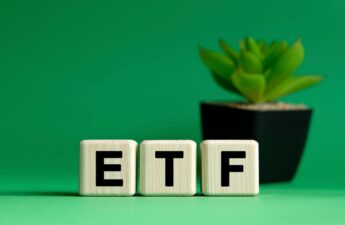To understand how Ethereum functions, you need to understand these three concepts: Ether, Gas and ERC-20 tokens. Collectively they help power, incentivize and allow others to build their own tokens on top of Ethereum’s blockchain.
What is Ether?
Ether can best be thought of as digital fuel for Ethereum. To power your car, you need to buy petrol. To power your transactions on Ethereum, you need to buy Ether.
On Ethereum, that Ether is an amount of computer power required in order to make your transaction work.
To return to the car analogy, it’s how much petrol is required to make the engine work and power the car to the destination you’re looking to get to.
In order to calculate how much Ether is needed to make a transaction work, the developers behind Ethereum created Gas.
What is Gas?
Gas is the cost the network charges in order to process your transaction.
In the car analogy, it’s how much a petrol station will charge you to fill your car with petrol – normally a part of the cost per gallon or litre.
If you want to send Ether, interact with a smart contract or anything else that needs to be recorded on the blockchain, you have to pay for it.
That payment is calculated in Gas, and is paid in Ether.
Bitcoin miners charge transaction fees to process people’s transactions; a similar process applies on Ethereum. An incentive is created to encourage an Ethereum miner to process your transaction quickly.
That Gas price rises and falls, depending on how busy the Ethereum network is, i.e. how many transactions need to be verified.
What are ERC-20 tokens?
Ethereum is not just a blockchain, like Bitcoin; it is a platform. This means that other tokens can run on it, and decentralized applications (dapps) can be built atop it, using smart contracts.
As Ethereum’s popularity grew, and lots of people started creating their own smart contracts, a problem arose: how do you get these different contracts to interact with each other?
The answer was ERC-20. This is a standard, or set of rules that make it easier for contracts to interact.
The ERC-20 token standard allows developers to create their own tokens inside the Ethereum network. It’s provided an easier route for companies to develop blockchain products instead of building their own cryptocurrency.
Some tokens, like Uniswap’s UNI token, are set to remain ERC-20 tokens; other cryptocurrencies, such as Binance Coin, have since swapped to their own blockchains.
What are the properties of ERC-20 tokens?
ERC-20 tokens are the most commonly used tokens on the Ethereum network. They are designed to be used for paying for functions and are known as utility tokens. They can also be used to pay for goods and services.
These tokens are:
💻 – Fungible – The code of each token is the same as any other although transactions histories can be used to identify and segregate tokens.
🛫 – Transferable – They can be sent from one address to another.
⛏️ – Fixed supply – A fixed number of tokens must be created so that developers cannot issue more tokens and raise the supply.
Did you know?
EOS, Tron and VeChain were all originally issued as ERC-20 tokens and have now converted to their respective mainnets.
How to buy and store ERC-20 Tokens
Many ERC-20 tokens are tradeable on cryptocurrency exchanges such as Coinbase and Binance.
You’ll also need a cryptocurrency wallet that can store Ethereum tokens; either a software wallet such as MetaMask, or a hardware wallet.
What cryptocurrencies are based on the ERC-20 standard?
Since the ERC-20 token standard was finalized, over 500,000 tokens compatible with ERC-20 have been issued. Some of the leading ERC-20 tokens include:
🦄 Uniswap (UNI) – A decentralized exchange (DEX) that enables users to swap tokens peer-to-peer, without relying on a centralized intermediary.
👾 Decentraland (MANA) – The token underpinning metaverse platform Decentraland, MANA is burned in order to acquire non-fungible LAND tokens representing plots of virtual land.
🦍 ApeCoin (APE) – The utility and governance token for the Bored Ape Yacht Club ecosystem, based on the popular PFP (profile picture) NFT collection.
👻 Aave (AAVE) – The native token of decentralized finance (DeFi) lending platform Aave.
🟡 Wrapped Bitcoin (WBTC) – An ERC-20 token that’s backed 1:1 by Bitcoin, which can then be used as collateral, boosting liquidity in DeFi applications.
What are the disadvantages of ERC-20 tokens?
⚠️ – Low-throughput – The Ethereum network has been clogged up when dapps have experienced high demand, such as CryptoKitties (which has since moved to its own Flow blockchain). When this happens, the network slows down and transactions become more expensive.
🐢 – Slow transactions – The block time is around 14 seconds, so transactions can take up to a minute to process. This may be adequate for some uses or too slow for others.
⏲️ – Ether – When transactions are made, a second cryptocurrency, called Ether, is needed to pay for transaction fees. This can add both time and cost, as it can result in dust on different platforms.
“It is an established fact that 90% of startups fail. And it should also be an established fact that 90% of these ERC-20s on CoinMarketCap are going to go to zero.”
—Vitalik Buterin
What other Ethereum standards are there?
Other Ethereum standards have been created for different reasons, including:
ERC-721 – These token standard for non-fungible tokens (NFTs). Each token is unique and has its own code, which has led to a burgeoning market for crypto collectibles including trading cards and digital artworks.
ERC-1400 – These are for security tokens so the tokens can be sold as securities. This requires more control over who can access the coins and introduces know-your-customer protocols.
ERC-223 – When you make a transaction, fees are currently paid in Ether. This standard allows for the transaction fees to be paid using the tokens involved. This means a transfer of Augur would be paid in Augur tokens, with the ticker symbol REP.
ERC-777 – It aims to be an improvement on the ERC-20 standard by lowering overheads and adding new features. It is backwards-compatible, which means it might be more widely adopted.
The future of ERC-20 tokens
Many blockchain platforms have been hyped as the next “Ethereum Killer,” but Ethereum has managed to keep its place just behind Bitcoin.
I’d obviously recommend ERC20, but launch with some well-functioning Plasma chains. Maybe each commercial bank could run one?
— vitalik.eth (@VitalikButerin) July 11, 2018
ERC-20 tokens are widely used and their traction will continue as long as Ethereum maintains its status. If anything, their biggest threat is from the enemy within: new Ethereum standards. When it comes to natural selection, they’ll need to be the fittest to survive.
The best of Decrypt straight to your inbox.

Get the top stories curated daily, weekly roundups & deep dives straight to your inbox.
Source: https://decrypt.co/resources/what-are-erc-20-gas-ether-ethereum


